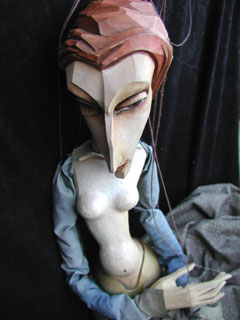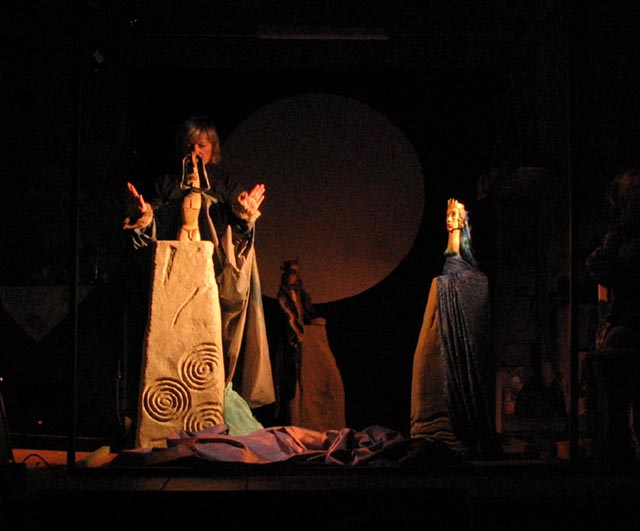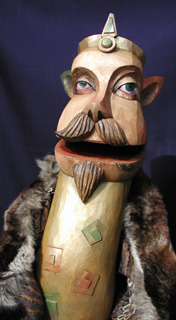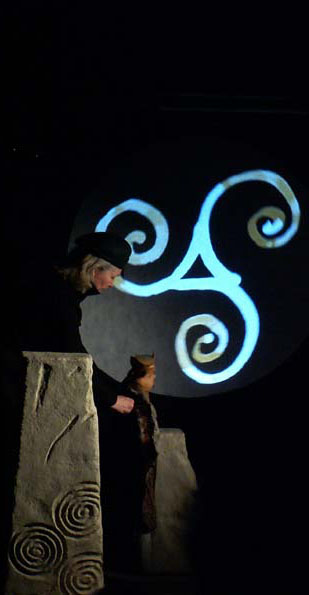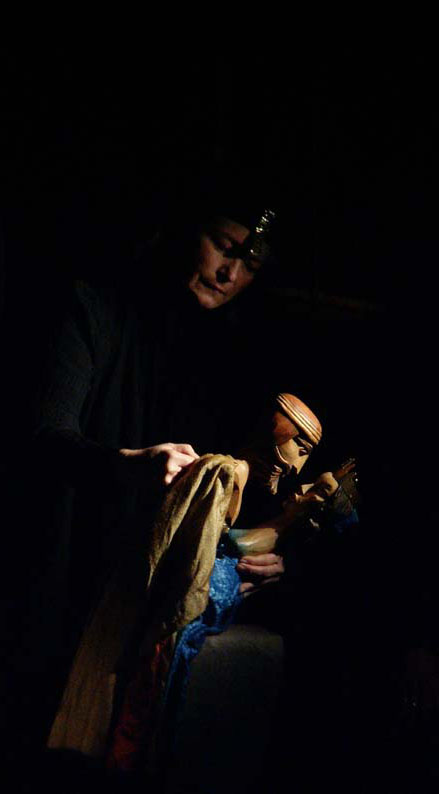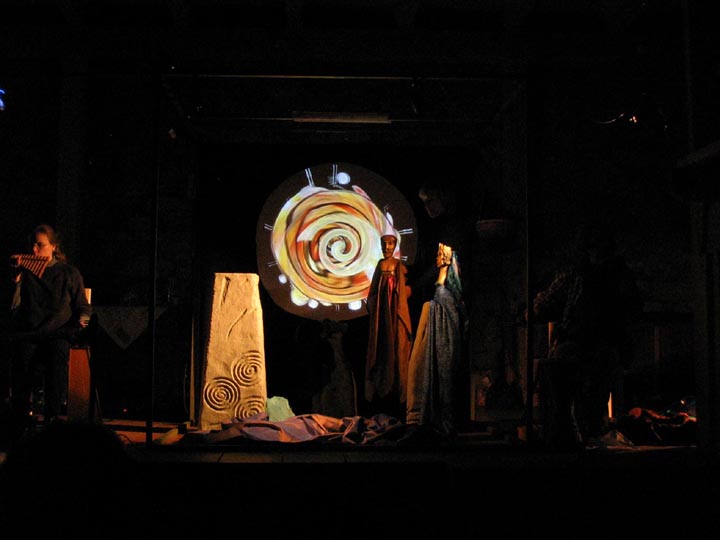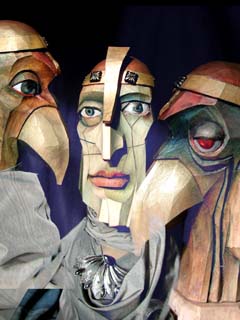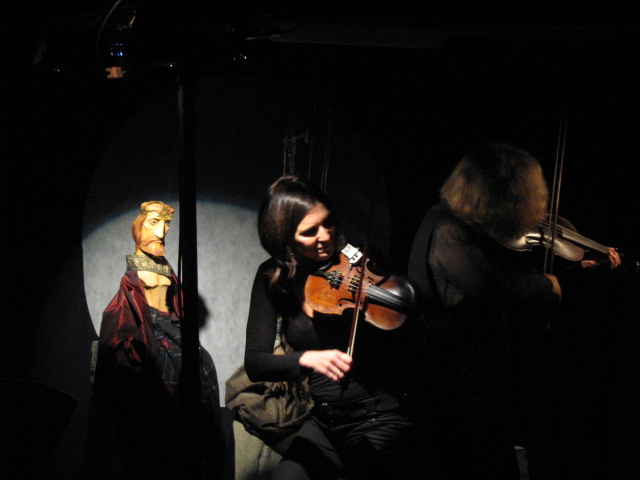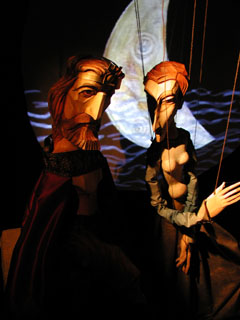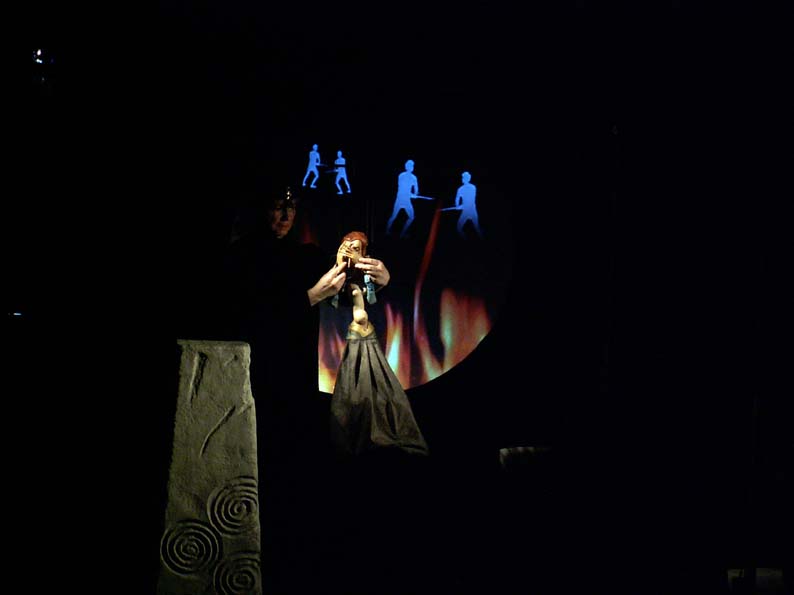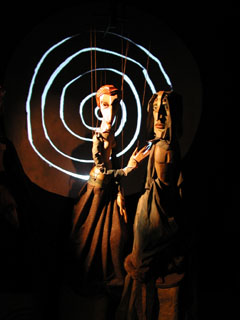|
The Legend - something about
The story is inspired by the Irish Celtic Myth Tochmarc Étaíne (Wooing of Étaín) from the 11th. Century.
Boand, goddess of river Boyne, married Elcmar. She desperately longed for a baby. She asked druid Midir for his help. He sacrificed a rooster to Dagda, god of Sun. Dagda caused that sun didn’t go down for whole nine months so he could father Étaín without letting Elcmar to know. Étaín is nurtured by Midir who tough her his druid‘s skill. However, he also fell in love with Étaín. Midir's wife Fuamnach was none too pleased, she cast a spell on Étaín turning her into a seagull so Midir and Étaín would be separated for eternity.
Couple hundred years later, Oengus, god of Love, had a dream about beautiful Étaín. He set forward over hill and dale to search for her. Far away he saw a seagull and he recognized Étaín in it. The spell was broken by mutual love and Étaín became a woman again. At this moment, Midir reappeared and he tried to woo away Étaín. Thereupon Oengus challenged Midir to fight for Étaín. Midir went blind in the fight but Étaín cured his wounded eyes. Second time, Fuamnach came to cast a spell on Étaín. She transformed her in a fly. Heart-broken Oengus beheaded Fuamnach’s head and left for the Other World. Midir definitively ended Fuamnach’s life by ashing her head.
After that Étaín, as a fly, was wandering another hundreds years all over the world. Once Étaín fell into the cup beside the King's wife. In earthly shape was Étaín again reborn. When she matured to the beauty, many suitors came to propose. Étaín fell in love with the one, Eochaid, king of mythical Tara and married him. Then his position of the Highest King was confirmed. Once again, Midir appeared and tried to persuade Étaín to come to his land...to the Land of the Immortals. Étaín didn’t want to leave without Eochaid’s permission. Thereby, Étaín is tossed by the option between mortal and immortal life.
The Celts
Celtic people lived in Europe since the 10th century BC and their myths are some of our common European cultural heritage. The Celts moulded the elemental features of the European culture and lived in harmony with their environment..
Relics of Celtic cultures can be found in numerous places all around Central and Western Europe and are the point of interest in many professions.
Interest in recovering this remarkable culture has induced us to bring back to life one of the many Celtic myths and to endow it with present-day qualities, to make it accessible to children, young people and adults alike.
Charakters und Symbols
Boand - Goddess of the River Boyne, Étaín´s mother
Elcmar - a reverse side of good, vicious, envious and mean, Boand’s husband
Eochaid - a legendary High King of Ireland, marriage with Étaín is numinous wedding between king and goddess- priestess
Étaín - goddess who has extraordinary position in Celtic mythology due to her double rebirth. She represents beauty, fertility and healing ability
Dagda - an important god of Irish mythology. His name means "The Good God", not good in a moral sense, but good at everything, or all-powerful. Dagda is a father-figure and a protector of the tribe. He also possessed a richly ornamented magic harp made of oak which, when he played it, put the seasons in their correct order
Fuamnach - Midir's first wife and a witch. When Midir fell in love with Étaín, Fuamnach got so jealous that she cast several spells on her
Midir - druid, master of the Land of the Immortals, husband of Fuamnach, but later falling in love with Étaín
Oengus - god of Love or fertility generally
 The triskele, or triple spiral. The spiral is an ancient Celtic symbol related to the sun, afterlife and reincarnation. It is supposed by some to be a symbol of pregnancy (the sun describes a spiral in its movements every three months; a triple spiral represents nine months) The triskele, or triple spiral. The spiral is an ancient Celtic symbol related to the sun, afterlife and reincarnation. It is supposed by some to be a symbol of pregnancy (the sun describes a spiral in its movements every three months; a triple spiral represents nine months)
The Druids and Druidesses - formed the professional class in Celtic society. They performed the functions of modern day priests, teachers, ambassadors, astronomers, genealogists, philosophers, musicians, theologians, scientists, poets and judges. They underwent lengthy training: some sources say 20 years. Druids led all public rituals, which were normally held within fenced groves of sacred trees. They also taught a mystery tradition. Since ancient Druidism was an oral tradition, they did not have a set of scriptures as do Christianity and other "religions of the book.
The cult of head - amongst the Celts the human head was venerated above all else, since the head was to the Celt the soul, centre of the emotions as well as of life itself, a symbol of divinity and of the powers of the other-world. The Celtic head-hunters venerated the image of the severed head as a continuing source of spiritual power. If the head is the seat of the soul, possessing the severed head of an enemy, honourably reaped in battle, added prestige to any warrior's reputation
Tara - The Hill of Tara (Irish Teamhair na Rí, "Hill of the Kings"), located near the River Boyne is reputed to have been the seat of the High King of Ireland.
|
